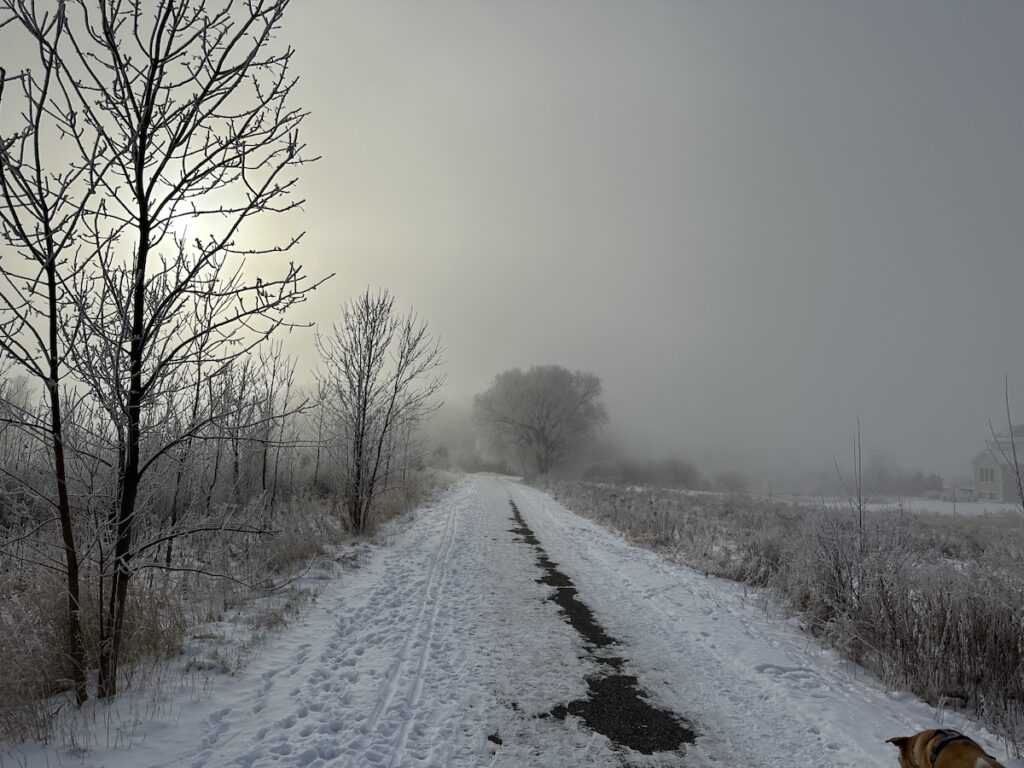How to Use Generative AI to Create Business Value

Understanding the Power of Generative AI
For those who haven’t been paying attention, generative AI has taken the world by storm. One of the more popular text-based services is ChatGPT (released November 2022), an AI-powered chatbot created by OpenAI. In just five days after launch, ChatGPT had garnered more than 1 million active users and over 100 million users two months after launch.[1],[2] For comparison, TikTok took nine months, Instagram took 2.5 years, and Facebook took 4.5 years to amass that many users.[3]
There is no doubt that artificial intelligence (AI) has impacted every industry and line of business over the past several years—some more than others. From ordering a pizza via a chatbot (circa 2016) to detecting abnormalities in medical images, AI has fundamentally changed how we perceive and interact with technology.[4],[5] Historically, most AI applications relied on predictive analytics to provide foresight on what was likely to happen in the future. Typical AI applications include fraud detection and anti-money laundering, monitoring manufacturing equipment sensors for anomalies, optimizing supply chains, segmenting similar customers into groups, or recommending what to watch next on Netflix. These applications still exist and will continue to remain relevant and essential to organizations. But, all of these use cases have one thing in common—they’re primarily based on numbers. That is, they are often trained on historical transactional, behavioral, and demographic data (numbers-based) and would output another number—whether it be a prediction, forecast, likelihood to watch, a cluster assignment, or an optimization (e.g., fastest route, shortest distance, etc.).
Now, with the increased sophistication and availability of foundation models and large language models (LLMs), generative AI has changed the game. In a nutshell, generative AI has catapulted us beyond the numbers. Generative AI can create new content—a blog, tooltip, support article, term paper, image, or even a piece of music. Generative AI is certainly based on numbers, but how you interact with it is the game changer. You can feed it a corpus of documents and ask it in nearly a hundred different languages to analyze the patterns, similarities, or differences across the documents. You can quickly summarize the documents and ask for key points, interesting moments, and key quotes. En masse, anyone can now generate product descriptions, recruiting emails, personalized ad copy, RFP responses, software release notes, and a myriad of other use cases that your business often needs. You can ask generative AI to create images for your presentations and software code or even generate background music for your how-to videos.
The democratization of AI has finally arrived. From kids to grandmothers, everyone is transfixed by generative AI’s ability to create human-like content.
AI is now more approachable than ever; it’s available to non-experts in statistics, mathematics, data science, or programming. It’s accessible to creative professionals, accountants, marketers, support professionals, civil engineers, programmers, and even students who use it for tests and homework. Generative AI has essentially democratized artificial intelligence—making it readily available and easily accessible to everyone—no matter their skill level.
Generative AI promises to shape the future of technology and redefine the limits of what AI means in practice. It has the potential to augment human creativity and automate tasks that were previously too challenging for “traditional” NLP and rules-based systems. This automation will certainly make businesses more efficient and productive. But, as with any technology, generative AI also presents challenges and ethical considerations that must be addressed before business leaders can add this game-changing technology to their portfolio.
What is Generative AI?
At its core, generative AI encompasses a range of models capable of creating new content—text, software code, images, voice, video, music, or even complex data structures using synthetic data. These AI models learn the intrinsic patterns of their training data and then generate outputs that align with these patterns, effectively mimicking the original data’s style, tone, or structure. Let’s explore a few key types of generative AI models and their business applications:
- Text & Code Generation Models (LLMs): The most well-known example of this is OpenAI’s GPT-4 models, but others include Google’s PaLM 2 and Meta’s LLaMA. For code gen, GitHub Copilot, Stability AI’s StableCode, and Salesforce’s CodeT5+ are prime examples. The business applications are expansive and include: drafting emails, news articles, press releases, knowledge base articles, product descriptions, usable software code, hyper-personalized marketing content, and virtual assistants.
- Image Generation Models: These models are used to create realistic images. OpenAI’s DALLE-2, Midjourney, and Stable Diffusion are well-known examples of diffusion models. Businesses use these models to create “interactive fashion content generation”, photorealistic pictures of products, or even 3D models of products.
- Music Generation Models: AI models like OpenAI’s MuseNet, Aviva, and Meta’s AudioCraft can compose music in various styles and genres. In business, these models can create unique soundtracks for video productions or background music for elevators, restaurants, and retail shops. For retailers, this seems to open the doors to having personalized music experiences for consumers and game developers; what’s not to like about royalty-free AI-generated music?
For the most part, text, code, image, and music generation models augment human creativity and productivity rather than replace it. From my experience, humans + AI are a winning combination.
How Does Generative AI Work?
Generative models are trained on large datasets—the larger and more diverse the dataset, the better the model can learn and generalize. For the curious, Stanford’s Center for Research on Foundation Models (CRFM) has compiled a list of over 100 data sets, applications, and LLMs. For instance, text generation models are trained on millions of books, articles, and websites to understand language and context. Similarly, image generation models learn from vast image repositories, and music generation models are trained on music libraries across various genres and styles. However, businesses should be wary of some of these models as they often contain sensitive, proprietary, and intellectual property that the mode creators did not seek permission to use.
Training these models involves iterative processes of learning and fine-tuning or adaptation. Essentially, outputs are generated to train a model, and the output quality is then assessed based on an objective function. Then, the models adjust their parameters and weights to hopefully improve, and then re-generate output again—this cycle continues until the model achieves a desirable level of accuracy. However, fine-tuning is not the only way to infuse knowledge into your model; other techniques, which are faster and more practical for many businesses, include retrieval augmented generation (RAG) and zero, one, or few shot learning or prompting. I will discuss these in a subsequent post.
Using Business Data to Train Generative AI Models
Let’s look at how a business may approach training these models:
- Text Generation Models: If a business wants to automate customer service responses, they could use their proprietary dataset of previous customer interactions, including queries and corresponding responses for fine-tuning, RAG, or prompt engineering. This allows the model to understand the context, tone, and appropriate responses for various customer issues. The trained model can then generate responses to new customer queries based on what it has learned.
- Image Generation Models: For retailers aiming to generate realistic images of products, the models can be customized using a large dataset of existing product images. It would learn the nuances of the product’s features, textures, and colors. Then, it could generate images of new or modified products without physical prototypes or photoshoots.
- Music Generation Models: Suppose a business wants to create unique background music for its locations. In this case, a model could be adapted using diverse music that aligns with the brand’s image. Once trained, the model can generate new, unique music that maintains the brand’s style and ambiance.
While training generative AI models requires technical expertise and resources, numerous pre-trained models and user-friendly platforms simplify the process significantly. For example, Hugging Face is building a community for this very purpose. These platforms allow businesses to leverage generative AI without needing extensive AI knowledge or capabilities in-house. Also, connecting an internal knowledge base to a LLM using RAG and clever prompt engineering is often a more efficient approach for many companies.
Remember that while the potential of generative AI is vast, its use should be coupled with a careful understanding of the ethical considerations, including issues related to data privacy, copyright, and potential misuse of the technology.
Applications of Generative AI Across Industries
McKinsey estimates “that generative AI could add the equivalent of $2.6 trillion to $4.4 trillion annually across the 63 use cases [we] analyzed – by comparison, the United Kingdom’s entire GDP in 2021 was $3.1 trillion.”[6] Their research revealed that “about 75 percent of the value that generative AI use cases could deliver falls across four areas: Customer operations, marketing and sales, software engineering, and R&D.”[7]
The innovative potential of generative AI is being realized across a multitude of industries. Let’s explore how it is being applied:
- Banking and Finance: In this sector, generative AI can automate the creation of financial reports and personalized marketing content. Some global banks use generative AI to analyze large corpora of internal, proprietary research and client notes to provide hyper-customized advice and communications to their wealth management customers. Goldman Sachs is using generative AI to write software code.
- Energy and Utilities: Typically conservative in their adoption of new technologies, generative AI will likely gain a foothold in customer service departments similar to what Octopus Energy is doing.
- Insurance: AI has long been used in automating claim assessments by generating predictive models based on historical claim data. With generative AI, improved customer support for agents, brokers, and customers through virtual assistants connected to corpora of internal data. We’ll also see more accelerated underwriting, faster risk assessments, and more efficient claims investigation and adjustments.
- Government and Public Sector: Governments can use generative AI to automate responses to public queries, automatically create content for specific demographics, or predict potential public policy outcomes based on past data. The U.S. Government Accountability Office (GAO) identifies automation, information summaries, and productivity improvements as key opportunities. The government of Singapore is using generative AI as a human “co-pilot” to help automate the mundane and augment human intelligence (see MIT Tech Review — Empowering Asia’s Citizens: the Generative AI Opportunity for Government).
- Healthcare: In healthcare, generative AI can help generate realistic 3D models for surgical planning or training. Based on past patient data, it can also simulate patient responses to various treatments. It is also used for many companies’ personalized patient communications, marketing content, and corporate communications.
- Life Sciences: Generative AI can aid in drug discovery, simulating the likely outcomes of various chemical compounds. It can also help in genomic research by generating predictions about gene functions. Cognizant is using it for various use cases, including drug development.
- Manufacturing: AI can aid in product design, generating prototypes based on desired features. It can also optimize production planning by generating predictive models of the manufacturing process. Automotive manufacturers use it to help design cars, which cost up to $3 billion.
- Retail: In retail, generative AI can create hyper-personalized marketing content for customers, enhancing customer engagement. Coca-Cola has launched a contest and invited “digital creatives” to create artwork and ads for the company. Many retail clients use it for marketing and customer service use cases.
- Telecommunications: Telecom companies can use generative AI for network design, router configuration, and optimize network performance. AI can also automate customer service responses, enhancing efficiency.
- Transportation and Logistics: Generative AI will play a significant role in the supply chain. With all of the unstructured data like invoices, shipping manifests, and bills of materials, generative AI will quickly analyze data across this corpus to make things run smoother and quicker. They’ll also be able to generate new content automatically when disruptions occur. For vehicle manufacturers, they will accelerate vehicle design by rapidly creating 3D virtual models based on desired features.
Across these industries, the ability of generative AI to learn from data and create new, high-quality content or predictive models has proven to be a valuable tool. There are five essential patterns of generative AI that I will cover in a future post, but include summarization, generation, Q&A, translation, and matching. As AI technology continues to evolve, its applications across various industries are bound to expand further.
The Future of Generative AI: Benefits and Risks
Generative AI holds great promise, with vast potential to impact industries and transform business operations. However, like any transformative technology, it also brings a set of risks and challenges that business leaders must navigate.
Benefits of Generative AI
- Increased efficiency: By automating tasks like content creation, customer service, and predictive modeling, businesses can drastically increase their operational efficiency.
- Cost savings: Automation through generative AI reduces manual effort, leading to significant cost savings in the long run.
- Improved decision-making: Generative AI can simulate various scenarios based on past data, enabling better strategic planning and decision-making.
- Enhanced customer experience: Personalized content and interactions powered by AI can provide a unique and improved customer experience, leading to higher engagement and customer retention.
- Innovation: The capability of AI to generate new content or ideas can drive innovation across various sectors like product design, marketing, entertainment, and more.
Risks and Challenges
As mentioned in my post on generative AI ethics, there are several considerations that adopters of the technology need to consider. They include:
- Data privacy: Generative AI requires large volumes of data for training. Ensuring that this data is collected and used in a manner that respects privacy laws and norms is a significant challenge.
- Ethical considerations: The ability of AI to generate realistic content raises concerns about misuse, such as the creation of deepfakes or misleading information. It’s crucial to use Generative AI responsibly and implement measures to prevent misuse.
- Quality control: While AI can generate content, the quality of that content can vary. Making sure the generated content meets the required standards is a challenge that needs constant monitoring and feedback.
- Intellectual property rights: As AI creates content, questions around copyright and ownership arise. Regulators and businesses need to navigate these complex issues.
- Bias: If the data used to train AI models contains biases, the output generated by these models will likely perpetuate the same biases. Businesses need to ensure the data used for training is unbiased and representative.
As we look forward to the future, business leaders must consider both the benefits and risks of using generative AI. By making informed decisions and using the technology responsibly, businesses can harness the power of generative AI to drive growth, innovation, and efficiency.
How to Get Started
Generative AI will continue to gain traction as companies embed it within their workflows and integrate it with their business applications. This will impact every line of business and industry. Its ability to generate new ideas and produce human-like content while automating the tedium and augmenting human intelligence has enabled businesses to consider it a cost-effective and reliable alternative to manual labor—the opportunity is simply too big to ignore. However, it’s not without its risks and challenges. Hence, organizations must carefully consider the first use cases for implementation and put in a system to monitor and track its output and usage (see my post on GenAIOps: Evolving the ML Ops Framework).
Getting started with generative AI is an investment in technology, time, and resources. However, the potential benefits—from cost savings and improved efficiency to new innovative capabilities—make it an investment worth considering, or else you risk becoming irrelevant.
Here’s a checklist to get you started:
- Have you identified the top use cases for generative AI? Yes/No
- List the top five. ___________________________________________
- Do you have IT and executive buy-in for the initiative? Yes/No
- If not, who do you need onboard? How will you secure your buy-in? ________________________________________________________
- Have you established a set of KPIs for the generative AI proof-of-concept that you will start with? Yes/No
- What are they? ___________________________________________
- Do you know how to calculate the ROI of your generative AI investment? Yes/No
- Have you established a project team to implement the generative AI proof-of-concept? Yes/No
- Who is on the team? What are their roles? ________________________
- For the use cases identified, do you have specific “golden examples” that you can use to identify the key inputs and ideal outputs? Yes/No
- Do you have sensitive data that you want to maintain ownership of? Yes/No
- Do you know how to keep this data secure/private in your generative AI solution? Yes/No
- Do you know how to securely integrate proprietary or internal knowledge data sources into generative AI output? Yes/No
- Have you identified the line-of-business applications that will be needed to support the proof-of-concept? Yes/No
- Do you have a set of customized AI guardrails that need to be implemented? Yes/No
- Do you have a plan for administration, operating, and reporting on the generative AI platform? Yes/No
If you’d like to learn more about AI, pick up a copy of Artificial Intelligence: An Executive Guide to Make AI Work for Your Business.
[1] Milmo, Dan. 2023. “ChatGPT Reaches 100 Million Users Two Months after Launch.” The Guardian, February 2, 2023, sec. Technology. https://www.theguardian.com/technology/2023/feb/02/chatgpt-100-million-users-open-ai-fastest-growing-app.
[2] Cerullo, Megan. 2023. “ChatGPT User Base Is Growing Faster than TikTok.” www.cbsnews.com. February 1, 2023. https://www.cbsnews.com/news/chatgpt-chatbot-tiktok-ai-artificial-intelligence/.
[3] Walters, Natalie. 2019. “The Social Media Platforms That Hit 100 Million Users Fastest.” The Motley Fool. January 20, 2019. https://www.fool.com/investing/2019/01/20/the-social-media-platforms-that-hit-100-million-us.aspx.
[4] “You Can Now Order Domino’s Pizza through a Chatbot on Facebook Messenger.” 2016. Business Insider. September 19, 2016. https://www.businessinsider.com/you-can-now-order-dominos-pizza-through-a-chatbot-on-facebook-messenger-2016-9.
[5] Johnson, Kevin B., Wei‐Qi Wei, Dilhan Weeraratne, Mark E. Frisse, Karl Misulis, Kyu Rhee, Juan Zhao, and Jane L. Snowdon. 2020. “Precision Medicine, AI, and the Future of Personalized Health Care.” Clinical and Translational Science 14 (1). https://doi.org/10.1111/cts.12884.
[6] Chui, Michael, Eric Hazan, Roger Roberts, Alex Singla, Kate Smaje, Alex Sukharevsky, Lareina Yes, and Rodney Zemmel. 2023. “Economic Potential of Generative AI | McKinsey.” Www.mckinsey.com. June 14, 2023. https://www.mckinsey.com/capabilities/mckinsey-digital/our-insights/the-economic-potential-of-generative-ai-the-next-productivity-frontier.
[7] Chui, Michael, Eric Hazan, Roger Roberts, Alex Singla, Kate Smaje, Alex Sukharevsky, Lareina Yes, and Rodney Zemmel. 2023. “Economic Potential of Generative AI | McKinsey.” Www.mckinsey.com. June 14, 2023. https://www.mckinsey.com/capabilities/mckinsey-digital/our-insights/the-economic-potential-of-generative-ai-the-next-productivity-frontier.
Categories
- AI Trends (8)
- Analytics Leadership (10)
- Artificial Intelligence (52)
- Data Faces Podcast (5)
- Data Leadership (3)
- Marketing (18)
- Modern Data Stack (3)
- News (8)
- Tech News (1)
Latest Posts
- Stop Chasing Hallucinations—Focus on Agentic Quality
- Gartner’s Four-Box Foreteller of Fortunes (and FUD)
- From “AI-Ready” to AI Reality: Why Actionable Data Strategies Beat Endless Planning
- Team Dynamics Over Technology: The Human Elements that Drive AI Success
- The Customer Hero Principle: Why Your B2B Messaging Falls Flat



